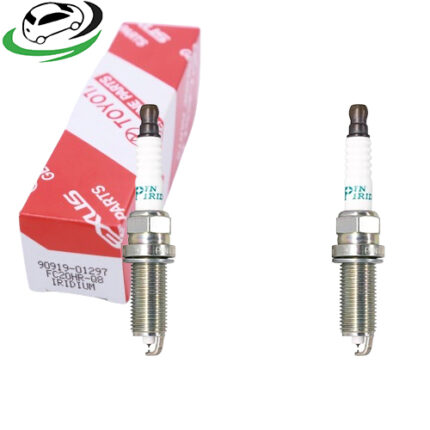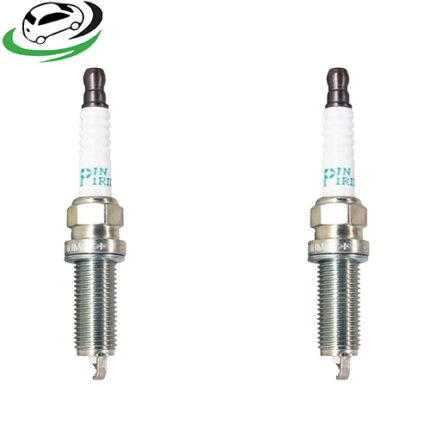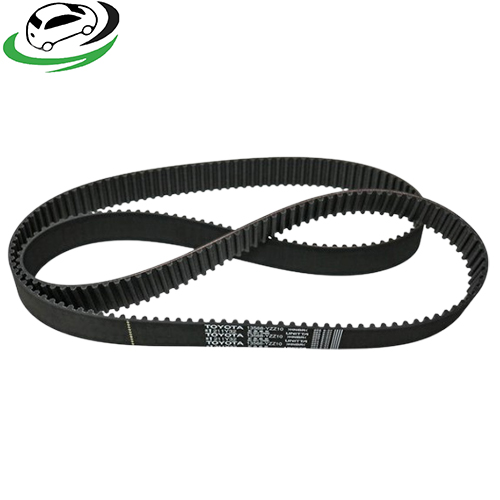-11%
Get Genuine Timing Belt For 1/2/3MZ-FE Engines 13568YZZ10
The genuine timing belt is a critical engine component that synchronizes the rotation of the crankshaft and camshaft(s), enabling the engine’s valves to open and close at precise intervals. This timing is crucial to engine performance, fuel efficiency, and preventing serious internal damage. Understanding the structure, function, maintenance, and replacement needs of a genuine timing belt can help car owners ensure optimal vehicle performance and longevity.
1. Structure and Composition of Timing Belts
Timing belts are made from high-strength materials designed to withstand the stresses of engine operation. They are typically constructed from rubber and reinforced with high-strength cords made from materials like fiberglass or Kevlar. This reinforcement prevents stretching or breakage under load. Many timing belts also have nylon-fabric teeth that ensure a better grip on the gears and reduce wear.
These teeth are spaced precisely to align with the teeth on the crankshaft and camshaft gears, ensuring that the timing between these components remains accurate. In genuine timing belts, the materials and construction undergo rigorous quality control to match OEM (original equipment manufacturer) specifications, which provides better longevity and performance than aftermarket alternatives.
2. The Role of the Timing Belt in Engine Operation
The timing belt’s primary role is to synchronize the crankshaft and camshaft(s) to ensure the engine’s intake and exhaust valves open and close in exact coordination with the pistons. For an engine to run smoothly, the intake valves need to open to allow air and fuel into the combustion chamber just before the piston reaches the top of its cycle. Similarly, the exhaust valves open to release exhaust gases just before the piston moves down. If this timing is off by even a small margin, the engine may lose efficiency, misfire, or suffer severe damage.
In some engines, the timing belt also drives other components, such as the water pump, oil pump, or balance shaft, which further underscores the importance of its precise operation.
3. Benefits of a Genuine Timing Belt
a) Reliability and Durability
Genuine timing belts are manufactured to meet the exact specifications required by the engine’s design. They use premium-quality materials, which ensures longer life and reduces the risk of sudden failures. Aftermarket belts may not have the same quality or durability, and they often vary in material strength, which can lead to premature wear or failure.
b) Enhanced Performance and Efficiency
With precise timing, a genuine timing belt ensures the engine runs smoothly, maintaining optimal fuel efficiency. The exact fit and durability of a genuine belt prevent the belt from loosening or slipping over time, which can help maintain consistent fuel economy and performance. This is especially valuable in high-performance or turbocharged engines, where timing precision is critical.
c) Reduced Risk of Engine Damage
Using a genuine timing belt reduces the risk of catastrophic engine failure. If a timing belt fails in an interference engine (an engine where valves and pistons share the same space), the pistons can collide with the valves, resulting in severe internal engine damage. Genuine timing belts are designed and tested to handle the specific demands of their intended engines, lowering the risk of unexpected breakage.
4. Maintenance and Replacement of Timing Belts
a) Recommended Replacement Intervals
Timing belts have a recommended service interval, typically between 60,000 and 100,000 miles, depending on the vehicle and driving conditions. High-mileage or older vehicles may require more frequent inspection and replacement. Ignoring this interval increases the risk of belt failure, especially in extreme conditions, such as very hot or cold climates, or in engines that experience heavy loads.
b) Signs of Wear
Several symptoms can indicate that a timing belt is wearing out or nearing failure. These include:
- Squealing or rattling noises from the front of the engine
- Engine misfires or reduced performance
- Rough idling or vibrations
- Visible wear, cracks, or fraying if the belt is accessible for inspection
When these symptoms appear, it’s advisable to replace the timing belt promptly to avoid further complications.
c) Replacement Procedure
Replacing a timing belt is a complex job that requires removing several engine components, including the timing cover, tensioners, and possibly the water pump. The replacement process must ensure the timing marks on the crankshaft and camshaft gears are correctly aligned to avoid altering engine timing. For this reason, it’s often best performed by a skilled mechanic with the proper tools and experience.
d) Replacing Related Components
It’s common practice to replace associated components, such as the water pump, tensioner, and idler pulleys, during timing belt replacement. These components wear at a similar rate to the timing belt, and replacing them together helps avoid labor costs and ensures a fully restored timing system. This preventive maintenance is especially important because a faulty water pump or tensioner can quickly wear down a new belt.
5. Timing Belt vs. Timing Chain
Some engines use a timing chain instead of a belt. Timing chains are made of metal and typically last longer than belts, sometimes for the lifetime of the engine. However, timing chains are heavier and may be noisier than belts. Belts, being lighter and quieter, are often preferred for smaller engines and allow for smoother operation. When a timing belt is due for replacement, it’s crucial to follow the manufacturer’s guidelines rather than attempting to switch to a chain unless the engine design specifically allows for it.
6. Advantages of Choosing a Genuine Timing Belt Over Aftermarket Options
a) Exact Fit and Compatibility
Genuine timing belts are designed to meet the exact specifications of the vehicle’s engine. Aftermarket belts, although often cheaper, may not be engineered to the same tolerances or made with materials of the same quality. This difference can lead to early wear or poor fit, which compromises engine performance.
b) Warranty and Quality Assurance
Genuine timing belts usually come with a warranty and are subjected to rigorous testing for quality assurance. The guarantee of a warranty is invaluable, as timing belts are critical to engine operation, and a sudden failure can result in costly repairs. This quality assurance is often absent with aftermarket options, which may not undergo the same level of testing or have the same quality guarantees.
c) Better Value Over Time
Although genuine timing belts are more expensive initially, their durability and the lower risk of replacement or failure make them a better investment over time. By reducing the risk of engine damage, a genuine belt also protects other components, such as the valves and pistons, adding further value.
7. Environmental Impact and Fuel Efficiency
A well-functioning timing belt contributes to improved fuel efficiency by ensuring the engine operates at its peak efficiency. Timing belts help maintain efficient fuel combustion and prevent incomplete combustion cycles, which can lead to higher emissions. Genuine belts’ high durability also means they require fewer replacements over the life of the vehicle, contributing to environmental sustainability by reducing waste.
8. Tips for Ensuring Longevity of a Timing Belt
- Regular Inspections: Even if the timing belt hasn’t reached its mileage limit, periodic inspection can help detect any wear, cracking, or fraying.
- Keep Fluids in Check: Engine oil or coolant leaks can cause premature timing belt wear. Addressing any leaks promptly is essential to extending belt life.
- Avoid High-Temperature Environments: Excessive heat can cause rubber components to degrade faster. Avoid excessive idling in hot conditions if possible.
- Use OEM Parts for Replacements: When replacing a timing belt, always opt for a genuine or high-quality OEM part to ensure compatibility and reliability.
Conclusion
The genuine timing belt is a vital component for maintaining optimal engine performance, ensuring fuel efficiency, and preventing severe engine damage. Designed to meet specific vehicle requirements, genuine timing belts offer unparalleled durability, precision, and compatibility. By adhering to recommended replacement intervals, inspecting the belt for wear, and using quality OEM parts, car owners can maximize the lifespan of their timing belt and maintain the reliability and performance of their vehicle.
Follow us on Facebook for more parts.




Reviews
Clear filtersThere are no reviews yet.